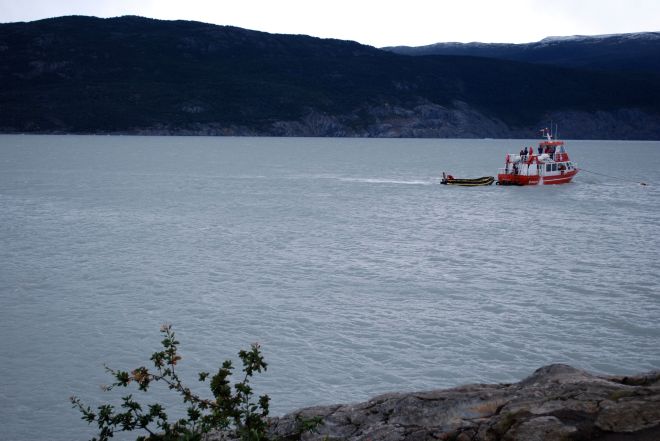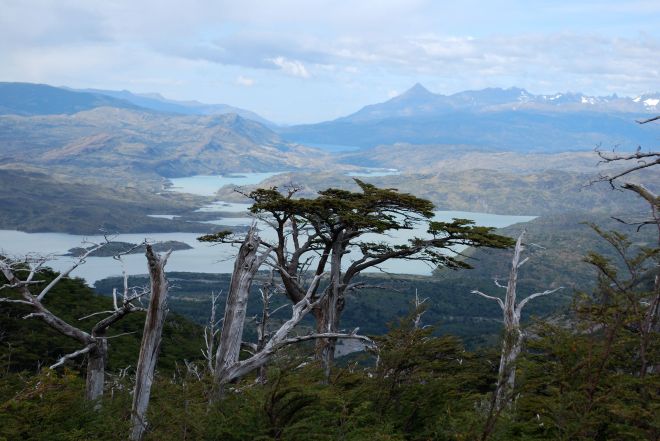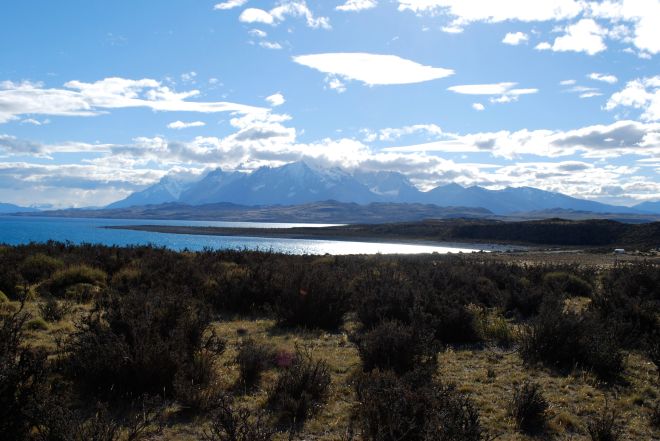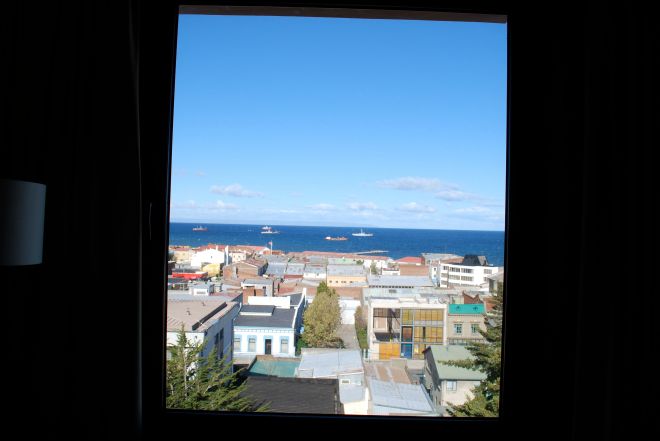Torres del Paine National Park, Chile
Yesterday was the culmination of one of the most physically demanding experiences of my life. Over four days, we completed the W circuit — about 50 miles — in gale force winds, horizontal rain and the occasional snow shower. It was trying, it was difficult. And it was absolutely amazing.
Last night’s dinner — pea soup, home-made gnocchi and a marshmallow soufflé — really hit the spot. But after expending so many calories, we woke up this morning starving. We fueled up on granola and eggs and then boarded a van. Today was a recovery day, allowing us to give our legs a rest while cruising around to those parts of the park we had not yet gotten a chance to see.
Our first stop was the Paine Waterfall, which was overflowing with glacial runoff.


Afterward, it was a short drive to Laguna Azul, a lake named for its vibrant blue color. The strong winds turn what should be a placid pond into a churning ocean.

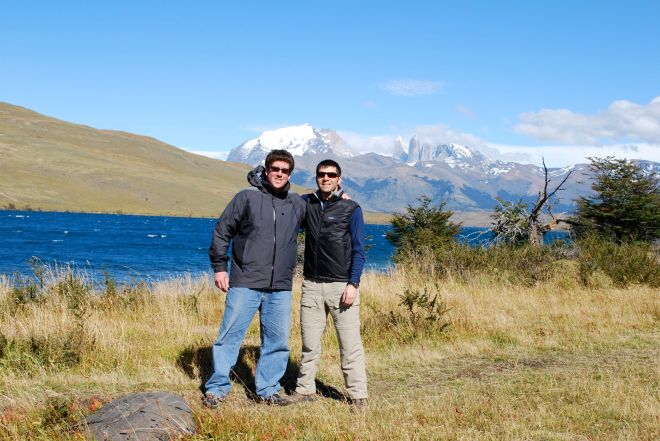
Herds of guanacos feed off of the grasslands that lead to the lake’s shores while the Torres sit imposingly in the background.


The van shuttled us to Laguna Marga, whose calcium formations give the body of water a power plant green color.


We stopped for lunch at a nearby marsh, where birds walked the shores, guanacos playfully galloped by and small and colorful wildflowers dotted the arid plains.


Back at the EcoCamp, we rested, packed and enjoyed the amazing weather. That evening, we were treated to a farewell lamb asado. Tomorrow, we will return to Punta Arenas for another overnight at Cabo de Hornos and dinner at Remezon.
On Monday, I’ll head back to the States on a 24-hour, four-flight trip, via Puerto Montt, Santiago and Atlanta. It should be exhausting.
But if it were easy to get to a place as spectacular as Patagonia, it wouldn’t be nearly as special.

















